Together with European and Arabian architecture, ancient Chinese architecture is an important component of the world architectural system. During its long development, it gradually formed into a style which featured timberwork combining stone carving, rammed earth construction, bucket arch buildings and many other techniques. Industrious Chinese laboring people created many architectural miracles such as the Great Wall, Forbidden City and the Mausoleum of the First Qin Emperor.
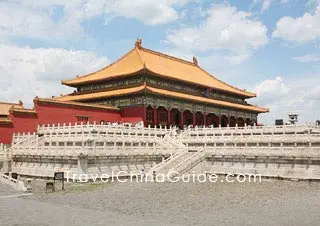 | | Forbidden City, Beijing | | 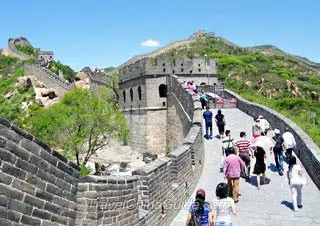 | | Badaling Great Wall, Beijing | |

Features: The most significant characteristic is the use of timber framework. Paintings and carvings were added to the architectural work to make it more beautiful and attractive. Ancient Chinese buildings have a long history which can be traced back to the Shang Dynasty (16th century BC - 771 BC). It has its own principles of structure and layout. Through the long development, many wonders have been created by industrious and clever laboring people. Ancient architectural miracles are innumerable ranging from
Great Wall,
White Horse Temple,
Mogao Caves to
Summer Palace and
Forbidden City.
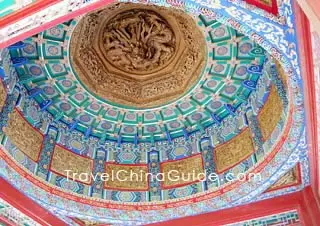 | | Intricate painted ceiling of a pavilion | | 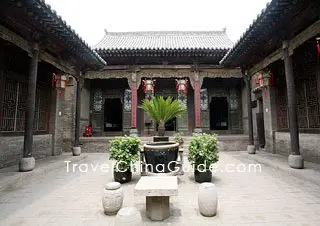 | | Symmetrical layout of a courtyard | |
Ancient Chinese architecture is mainly timberwork. Wooden posts, beams, lintels and joists make up the framework of a house. Walls serve as the separation of rooms without bearing the weight of the whole house, which is unique to China. As a famous saying goes, 'Chinese houses will still stand when their walls collapse.' The specialty of wood requires antisepsis methods to be adopted, thus develops into Chinese own architectural painting decoration. Colored glaze roofs, windows with exquisite applique design and beautiful flower patterns on wooden pillars reflect the high-level of the craftsmen's handicraft and their rich imagination.
The layout of a courtyard complex is also unique to China. The main structure is located on the central axis of a court while less-important structures are located to the left and right. The whole layout is symmetrical. Compared with European architectural style which is open and shut, a courtyard is like a hand scroll of painting which should be unfolded little by little. The scenery is different in each courtyard. Even in moving several steps within the court yard, you will be surprised at the changing of prospects. Likewise from the interior of the buildings the view from no two windows is the same.
- Last updated on Jul. 17, 2023 -
![]() Architecture Styles: There were many different styles of ancient Chinese buildings. All of them are unique and equally exquisite.
Architecture Styles: There were many different styles of ancient Chinese buildings. All of them are unique and equally exquisite.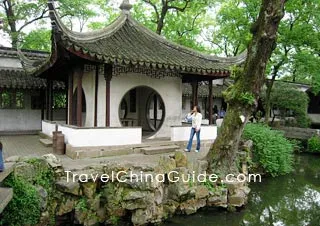
![]() Imperial Architecture
Imperial Architecture![]() Traditional Chinese Residence
Traditional Chinese Residence![]() Garden Architecture
Garden Architecture![]() Buddhist Architecture
Buddhist Architecture![]() Taoist Architecture
Taoist Architecture![]() Chinese Temples
Chinese Temples![]() China Architecture Culture: Architecture and culture are closely related to each other. Many buildings contain cultural connotations. The cultural facts will help people better understand the architectural structure and the design.
China Architecture Culture: Architecture and culture are closely related to each other. Many buildings contain cultural connotations. The cultural facts will help people better understand the architectural structure and the design.![]() Feng Shui
Feng Shui![]() Chinese Memorial Arch
Chinese Memorial Arch


